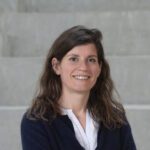Link to Pubmed [PMID] – 17937465
J. Rheumatol. 2007 Nov;34(11):2253-8
OBJECTIVE: To assess the prevalence and clinical and immunological significance of anticentromere antibodies (ACA) in patients with primary Sjögren’s syndrome (pSS).
METHODS: We retrospectively investigated the prevalence of ACA in patients with SS. We compared ACA-positive SS patients with ACA-negative pSS patients.
RESULTS: The prevalence of ACA among patients with pSS was 4.7% (10/212). Among the patients with SS and an associated autoimmune disease, 10 patients had ACA and limited cutaneous sclerosis (SSc). Clinical and immunological patterns did not differ between the 10 pSS patients with ACA alone and the 10 SS patients with ACA and SSc, except for presence of limited cutaneous SSc (lcSSc). Moreover, all ACA-positive sera recognized centromere protein-B on ELISA, regardless of the presence of SSc. The entire SS-ACA group (n = 20) showed greater frequency of Raynaud’s phenomenon, objective xerophthalmia, peripheral neuropathy, and additional autoimmune disorders, especially primary biliary cirrhosis, compared to pSS patients without ACA (p = 0.005, p = 0.04, p = 0.001, p = 0.05, p < 0.0001, respectively). SS patients with ACA less frequently showed anti-SSA or anti-SSB antibodies than those without ACA (p = 0.0002, p = 0.01, respectively) but greater prevalence of autoantibodies other than anti-SSA/SSB or ACA (p = 0.001).
CONCLUSION: Clinical and immunological features of SS were largely similar among SS patients with ACA with and without SSc. However, the presence of ACA among patients with SS allows identification of a subset of patients with “SS overlap syndrome,” who show a wide diversity of autoimmunity, encompassing but not limited to SSc.
